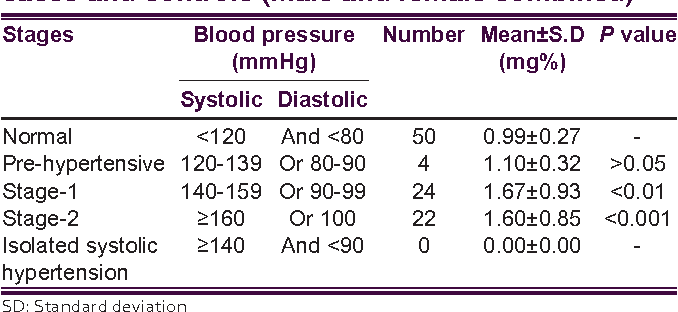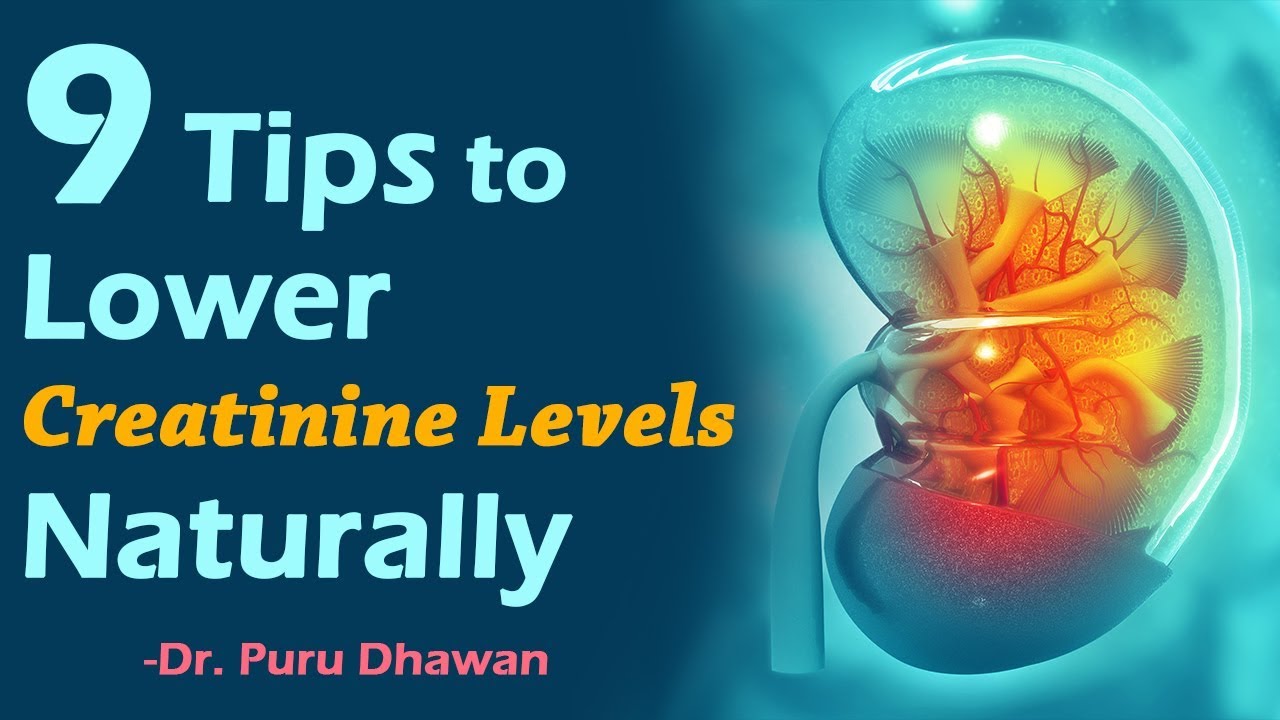Causes of low creatinine levels in blood. Low Creatinine Levels: Causes, Symptoms, and Treatment Options
What are the main causes of low creatinine levels in blood. How can low creatinine affect your health. What are the most effective treatments for increasing creatinine levels. How is low creatinine diagnosed and monitored.
Understanding Creatinine: The Body’s Energy Byproduct
Creatinine is a waste product formed when the body uses creatine for energy production. While it’s often associated with kidney function, creatinine levels can also provide insights into muscle mass, liver health, and overall metabolic processes. Typically, medical professionals focus on high creatinine levels as indicators of kidney problems. However, low creatinine levels can also signal underlying health issues that warrant attention.
The normal range for creatinine levels varies based on factors such as age, gender, and muscle mass. For adult males, the typical range is 0.6 to 1.2 mg/dL, while for adult females, it’s 0.5 to 1.1 mg/dL. Values below these ranges may be considered low and could indicate various health concerns.

Primary Causes of Low Creatinine Levels
Several factors can contribute to low creatinine levels in the blood. Understanding these causes is crucial for proper diagnosis and treatment. Here are the main reasons:
1. Decreased Muscle Mass
Muscle tissue is the primary source of creatine in the body, which is then converted to creatinine. A reduction in muscle mass can lead to lower creatinine production. This decrease may occur due to:
- Natural aging process
- Muscular dystrophy or other muscle-wasting diseases
- Prolonged inactivity or bed rest
- Malnutrition or severe weight loss
2. Liver Dysfunction
The liver plays a crucial role in creatine synthesis. When liver function is compromised, it can result in reduced creatine production and, consequently, lower creatinine levels. Conditions that may affect liver function include:
- Cirrhosis
- Hepatitis
- Fatty liver disease
- Liver cancer
3. Dietary Factors
While the body produces most of its creatine, a small portion comes from dietary sources. Low creatinine levels may be observed in individuals following certain diets:

- Vegetarian or vegan diets (low in meat, which is the primary dietary source of creatine)
- Low-protein diets
- Severely restricted calorie intake
4. Pregnancy
During pregnancy, women often experience a temporary decrease in creatinine levels. This is primarily due to increased blood volume and changes in kidney function to accommodate the growing fetus.
Symptoms Associated with Low Creatinine Levels
Low creatinine levels themselves don’t typically cause direct symptoms. However, the underlying conditions leading to low creatinine may present various signs and symptoms:
- Muscle weakness or fatigue
- Unexplained weight loss
- Decreased appetite
- Difficulty concentrating
- Swelling in the legs or abdomen (in cases of liver problems)
- Jaundice (yellowing of the skin and eyes)
- Frequent infections
It’s important to note that these symptoms can be associated with various health conditions and are not exclusive to low creatinine levels. A proper medical evaluation is necessary for accurate diagnosis.

Diagnosing Low Creatinine Levels
Creatinine levels are typically assessed through blood tests and urine analysis. The most common diagnostic methods include:
1. Serum Creatinine Test
This blood test measures the amount of creatinine in the bloodstream. It’s often part of a comprehensive metabolic panel or basic metabolic panel.
2. Creatinine Clearance Test
This test involves collecting urine over a 24-hour period to determine how efficiently the kidneys are filtering creatinine from the blood.
3. Glomerular Filtration Rate (GFR)
While typically used to assess kidney function, GFR calculations can also provide insights into creatinine levels and overall metabolic health.
When low creatinine levels are detected, healthcare providers may order additional tests to identify the underlying cause. These may include:
- Liver function tests
- Muscle enzyme tests (e.g., creatine kinase)
- Nutritional assessments
- Imaging studies (e.g., ultrasound or CT scans) to evaluate liver or muscle health
Treatment Options for Low Creatinine Levels
The treatment for low creatinine levels primarily focuses on addressing the underlying cause. Here are some potential approaches:
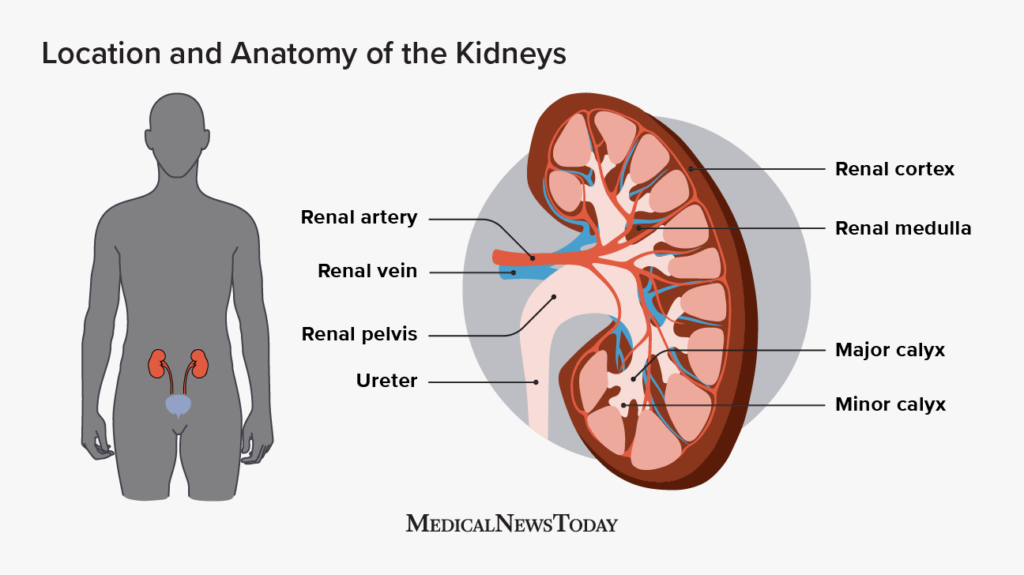
1. Dietary Modifications
Increasing protein intake, particularly from meat sources, can help boost creatinine levels. However, this should be done under medical supervision, especially for individuals with liver or kidney concerns.
2. Exercise and Strength Training
Building muscle mass through regular exercise and strength training can naturally increase creatinine production. A tailored exercise program should be developed in consultation with a healthcare provider or physical therapist.
3. Creatine Supplementation
In some cases, healthcare providers may recommend creatine supplements to increase creatinine levels. However, this approach should be carefully monitored, as excessive creatine intake can have adverse effects.
4. Treating Underlying Conditions
If low creatinine levels are due to liver dysfunction or other medical conditions, treating these underlying issues is crucial. This may involve medications, lifestyle changes, or other therapeutic interventions.
5. Addressing Nutritional Deficiencies
For individuals with malnutrition or severe weight loss, a comprehensive nutritional plan may be necessary to restore overall health and improve creatinine levels.

Potential Complications of Untreated Low Creatinine Levels
While low creatinine levels themselves may not directly cause severe complications, the underlying conditions can lead to various health issues if left untreated:
- Muscle weakness and atrophy
- Increased risk of infections
- Impaired liver function
- Nutritional deficiencies
- Decreased quality of life due to fatigue and weakness
- Complications related to specific underlying conditions (e.g., liver disease progression)
Regular monitoring and appropriate treatment are essential to prevent these potential complications and maintain overall health.
Preventive Measures and Lifestyle Considerations
While not all causes of low creatinine levels are preventable, certain lifestyle choices can help maintain healthy creatinine levels and overall well-being:
1. Balanced Diet
Consuming a well-balanced diet that includes adequate protein sources is crucial. For those following vegetarian or vegan diets, consulting with a nutritionist can help ensure proper nutrient intake.

2. Regular Exercise
Engaging in regular physical activity, including both cardio and strength training exercises, can help maintain muscle mass and promote overall health.
3. Liver Health
Protecting liver health through moderate alcohol consumption, maintaining a healthy weight, and avoiding exposure to toxins can support proper creatinine production.
4. Hydration
Staying well-hydrated is essential for overall health and can help maintain proper creatinine levels. However, excessive water intake (psychogenic polydipsia) should be avoided, as it can dilute creatinine concentrations in the blood.
5. Regular Health Check-ups
Routine medical check-ups and blood tests can help detect any changes in creatinine levels early, allowing for prompt intervention if necessary.
The Role of Creatinine in Disease Prevention
Recent research has suggested that creatinine may play a role in disease prevention beyond its function as a waste product. Laboratory studies have shown that creatinine can inhibit bacterial growth, indicating potential antimicrobial properties. While more research is needed to fully understand its effects in humans, this finding opens up new avenues for exploring creatinine’s role in the body’s defense mechanisms.
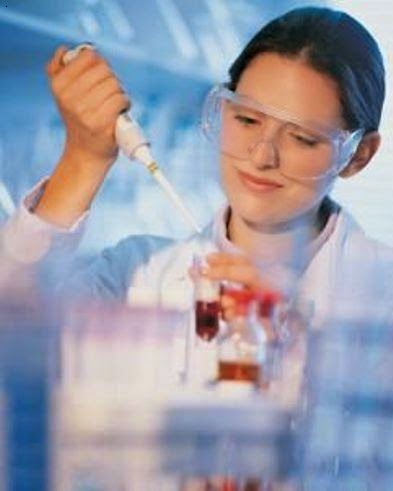
Possible areas of future research include:
- Investigating creatinine’s effectiveness against specific bacterial strains
- Exploring potential applications in developing new antimicrobial treatments
- Studying the relationship between creatinine levels and immune system function
- Examining the impact of creatinine on overall gut health and microbiome balance
As our understanding of creatinine’s multifaceted role in the body grows, it may lead to new approaches in both disease prevention and treatment strategies.
Special Considerations for Different Population Groups
The interpretation and management of low creatinine levels may vary for different population groups:
Elderly Individuals
In older adults, a gradual decrease in muscle mass is common and may lead to lower creatinine levels. While this can be a normal part of aging, it’s essential to differentiate between age-related changes and pathological causes.
Pregnant Women
During pregnancy, creatinine levels naturally decrease due to increased blood volume and changes in kidney function. Regular monitoring is important to ensure levels remain within the expected range for pregnant women.
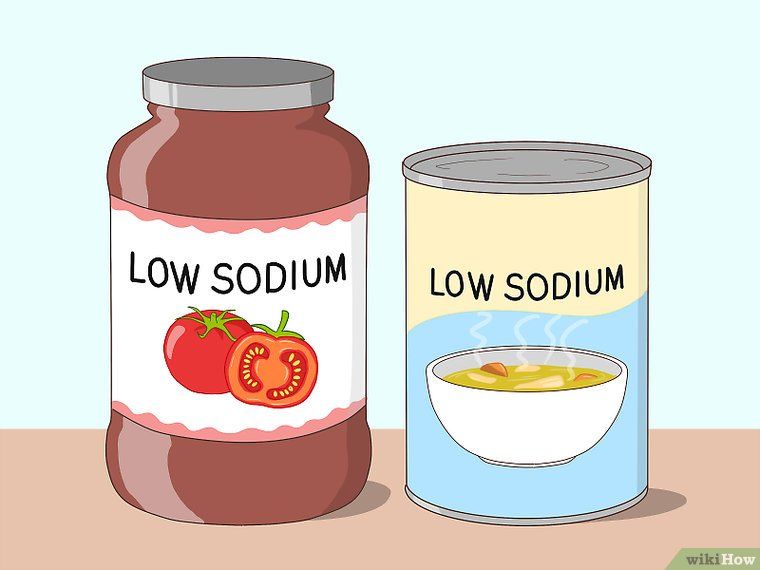
Athletes and Bodybuilders
Individuals engaged in intense physical training may have higher baseline creatinine levels due to increased muscle mass. For these individuals, what appears to be a “normal” creatinine level might actually be low relative to their usual range.
Individuals with Chronic Diseases
People with chronic conditions affecting muscle mass or liver function may require specialized interpretation of their creatinine levels and tailored management strategies.
Healthcare providers must consider these factors when assessing creatinine levels and developing treatment plans for different patient populations.
Emerging Research and Future Directions
The field of creatinine research continues to evolve, with new studies shedding light on its complex role in human health. Some areas of ongoing investigation include:
- Exploring the potential use of creatinine as a biomarker for various health conditions beyond kidney function
- Investigating the relationship between creatinine levels and cognitive function, particularly in aging populations
- Developing more accurate and efficient methods for measuring and interpreting creatinine levels
- Studying the long-term effects of creatine supplementation on overall health and disease prevention
- Examining the genetic factors that influence creatinine production and metabolism
As research progresses, our understanding of low creatinine levels and their implications for health may expand, potentially leading to new diagnostic tools and treatment strategies.

In conclusion, while low creatinine levels are often overlooked in favor of high levels, they can provide valuable insights into various aspects of health. By understanding the causes, symptoms, and treatment options associated with low creatinine, individuals and healthcare providers can work together to address underlying issues and promote overall well-being. Regular monitoring, lifestyle modifications, and appropriate medical interventions can help maintain healthy creatinine levels and support optimal bodily functions.
Low creatinine levels: Causes, symptoms, and treatments
We include products we think are useful for our readers. If you buy through links on this page, we may earn a small commission Here’s our process.
Medical News Today only shows you brands and products that we stand behind.
Our team thoroughly researches and evaluates the recommendations we make on our site. To establish that the product manufacturers addressed safety and efficacy standards, we:
- Evaluate ingredients and composition: Do they have the potential to cause harm?
- Fact-check all health claims: Do they align with the current body of scientific evidence?
- Assess the brand: Does it operate with integrity and adhere to industry best practices?
We do the research so you can find trusted products for your health and wellness.
Read more about our vetting process.
Was this helpful?
Creatinine is a waste product the body produces as it creates energy. Possible causes of low creatinine levels are low muscle mass, liver problems, dietary factors, pregnancy, or a health condition. Low levels could indicate that the liver or muscles are not working as they should.
Possible causes of low creatinine levels are low muscle mass, liver problems, dietary factors, pregnancy, or a health condition. Low levels could indicate that the liver or muscles are not working as they should.
This MNT Knowledge Center features aims to find out what causes creatinine levels to drop, whether this is always a cause for concern, and what can be done to restore healthier levels.
When the body uses a compound called creatine for energy, creatinine is left behind as waste. The levels of creatinine in the bloodstream or urine can be checked if there is a concern that someone may have a disease of the liver or muscles.
More often, low creatinine levels are a sign of losing muscle mass as people age, or it is a temporary condition during pregnancy or periods of illness, or due to malnutrition.
Fast facts on creatinine:
- Creatine is a substance made naturally in the body, with a small amount coming from food.
- It is used for energy in the body, made in the liver and found in muscles.
- Lower creatinine levels in an older adult, or in someone who is slightly underweight, should not be a serious cause for concern.
Creatine, a substance found in muscle tissue, has gained popularity as a dietary supplement due to evidence that it may increase body mass, improve short-term intense exercise performance, and aid in recovery.
When creatine breaks down as it is used for energy, creatinine is created as a waste product.
Creatinine levels vary from person to person depending on factors such as body size, age, or gender, so there is no standard or ‘normal’ level.
They are also dependent on blood volume. Someone who is dehydrated, for example, will have a higher creatinine than someone who has a normal blood volume.
Low creatinine levels could indicate a problem with the muscles or liver but may be due to something less serious, such as reduced muscle mass in older adults, drinking too much water (psychogenic polydipsia), or pregnancy.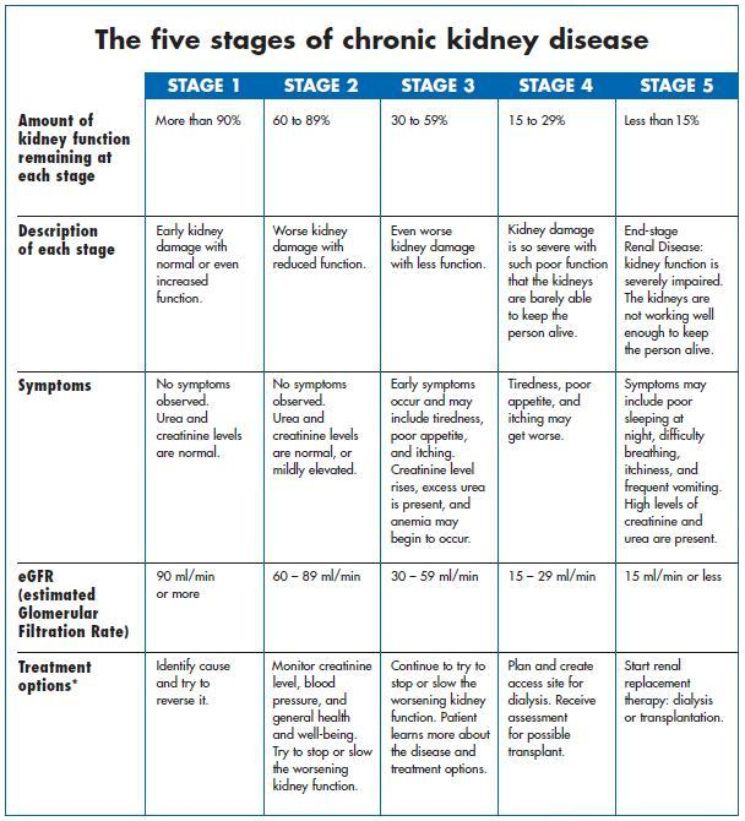
Creatinine is always present in the bloodstream, where it is removed by the kidneys and leaves the body in urine.
Although it is a waste product, research suggests that creatinine in the body may also play a part in fighting disease, as it has been shown to stop the growth of bacteria in the laboratory. More research is needed to see its effect in people.
Creatinine clearance is a test used by doctors that shows how well the kidneys are removing creatinine from the bloodstream.
The test is done using a timed urine sample, which means that all the urine someone passes in a set time period, such as 24 hours, is collected and tested to show how much creatinine has been removed from the body by the kidneys.
This test is most often used to judge high, rather than low creatinine levels in the body and is likely to be used alongside other tests to look at overall kidney health.
There are four key causes of low creatinine:
- low muscle mass
- liver problems
- diet
- pregnancy or illness
Low muscle mass
Levels of creatinine are often linked with muscle mass or the amount of muscle in the body, which can decrease with age or illness.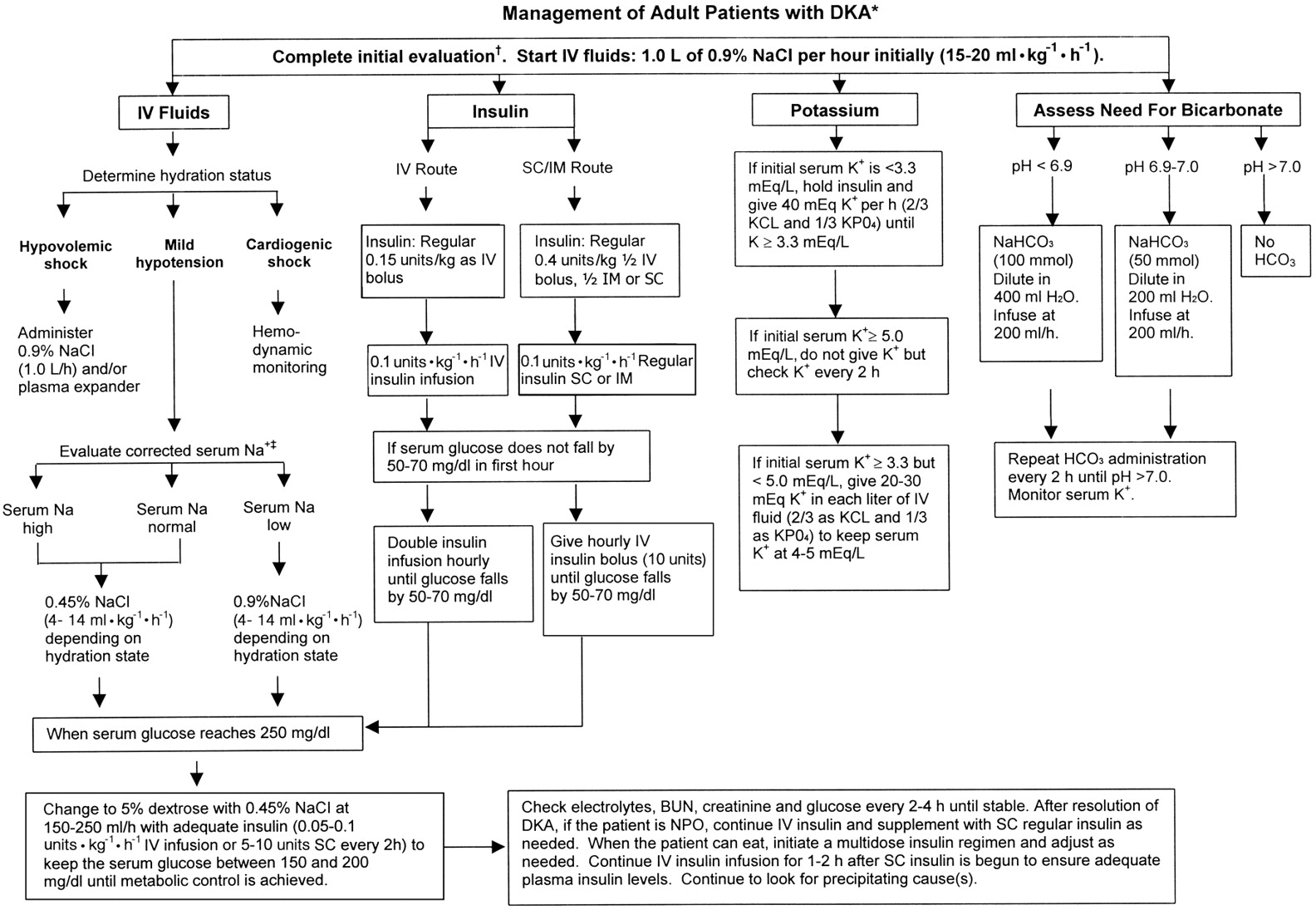
Low levels may indicate that muscles are less strong or are deteriorating, for example with a disease such as muscular dystrophy (MD).
Older adults often lose some muscle mass with age, and this is not usually a serious medical concern.
Liver problems
Creatine is made in the liver, and an unhealthy liver that is not working properly will not be able to make the normal amount of creatine.
For chronic liver disease, there can be a 50 percent reduction in the production of creatine. This means that there will be lower levels of creatinine in the blood, which can be checked with a simple blood test called a serum creatinine test.
Diet
Although creatine is made naturally in the body, a small amount comes from food, so low levels of creatinine could relate to diet.
Creatine is mostly found in meat, so those who follow a vegetarian or low-protein diet are likely to have lower levels than people who eat meat.
A prolonged period of not eating, or having an illness that prevents someone from eating, could be another cause of low levels of creatinine.
Pregnancy
Pregnancy is often a cause of low creatinine levels, which should return to normal after a woman has given birth.
Symptoms of low creatinine will vary depending on the underlying condition but can include:
- Low muscle mass: Lack of strength, difficulty exercising, a thin or frail body.
- Liver disease: Inflamed liver, which may cause pain in the upper right-side of the abdomen, fatigue or nausea.
- Diet-related: Feeling faint or dizzy, losing weight.
In the majority of cases, symptoms are unlikely to point clearly to low creatinine levels and could indicate other health problems.
A medical professional will test creatinine levels as part of a diagnosis if other symptoms are present, and a test is needed.
Usually, low creatinine means that there is too little creatine being produced in the body. This state will relate to the liver, muscles, or diet.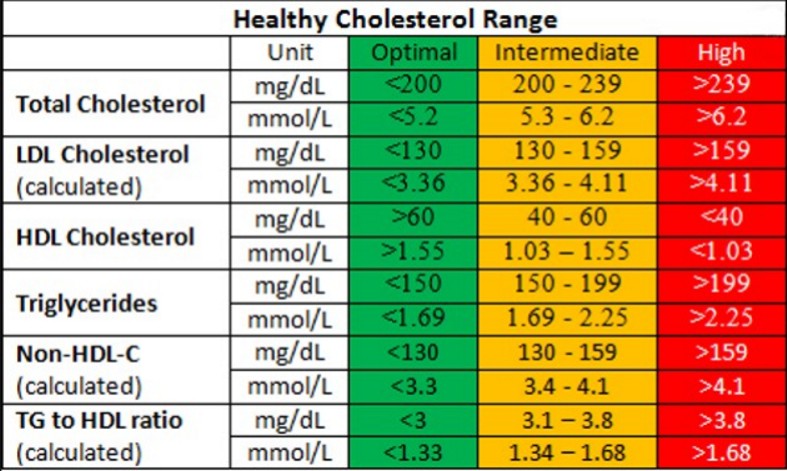
High levels of creatinine usually mean that there is too much creatine in the body, or that creatinine is not being filtered and removed from the body properly.
Creatinine levels often rise during intense exercise, as more creatine is burned for energy, or because someone may eat a high-protein diet.
High levels could also indicate a problem with the kidneys, as these organs get rid of waste products from the body to keep the blood clean.
Low creatinine levels may indicate various different conditions, so a doctor will use test results alongside other checks to work out what the underlying issue could be.
If low creatinine levels, alongside other symptoms, show that someone may have liver disease, treatment is likely to start with medication and lifestyle changes. These changes could include eating a more healthful diet and giving up alcohol.
If someone has a muscle disease, treatment may include physical therapy, medication, or surgery to support them to remain mobile.
How to increase creatinine levels
Gentle exercise to increase muscle mass, or increasing creatine intake in the diet may help, particularly for those on a vegetarian diet who may not be eating enough protein.
For people who do high-intensity exercise, creatine as a dietary supplement is generally considered safe. A range of creatine supplements is available for purchase online.
However, the body produces creatine naturally, and most people who eat a balanced diet and are moderately active should not need to supplement their diet.
Low creatinine levels can indicate an underlying health problem, such as liver disease, but if this is the case, it will usually present alongside other symptoms. In these instances, the condition will be best tested by a doctor.
More often, low levels of creatinine are a normal part of aging or a temporary issue that can be resolved with changes to diet.
Diet tips and home remedies
Creatinine is a waste product that can build up in the blood due to kidney disease and other factors. Staying hydrated, taking dietary measures, and using supplements can help reduce creatinine levels in the body.
Staying hydrated, taking dietary measures, and using supplements can help reduce creatinine levels in the body.
Creatinine is a natural waste product that the muscles create. The kidneys remove it from the body, and it is present in the blood and urine. As well as kidney problems, excess creatinine can also result from a high intake of protein, intense exercise, and the use of certain medications or supplements.
Doctors often use a creatinine test to determine how well the kidneys are functioning. High levels of creatinine in the blood or urine can be a sign that the kidneys are not filtering the blood effectively.
Having high levels of creatinine is not life threatening, but it may indicate a serious health issue, such as chronic kidney disease.
If a person has high creatinine levels due to a kidney disorder, a doctor will recommend treatment. Diet and lifestyle changes may also help.
In this article, learn more about what can cause high levels of creatinine and find some tips for managing levels naturally.
A routine blood test can measure creatinine levels. Factors that can raise levels include:
- certain medications, including some antibiotics and nonsteroidal anti-inflammatory drugs, or NSAIDs
- creatine supplements
- dietary factors, such as a high intake of protein
- strenuous exercise
- impaired kidney function
- low blood flow
- dehydration
Shock, infections, and serious illnesses such as cancer can also cause elevated creatinine levels, sometimes due to kidney damage.
If tests show high levels of creatinine in the body, it may be a sign that the kidneys are not working correctly. People with chronic kidney disease, for example, may have high levels.
If the glomerulus — the part of the kidney that filters waste — is damaged or otherwise not working efficiently, a person may have high levels of creatinine in the blood but low levels in the urine. This indicates that the kidneys are not functioning optimally.
Diseases that can affect kidney function and raise creatinine levels include:
- diabetes
- tumors
- some infections, such as hepatitis B and C, HIV, and syphilis
- systemic lupus erythematosus, which is sometimes called SLE or just “lupus”
If a blood or urine test shows that a person has high creatinine levels, the doctor may perform further tests to identify the cause.
What is a normal range for creatinine? Find out here.
A person may be able to reduce their creatinine levels by making some of the following changes to their diet.
Reducing protein intake
According to a 2014 study, eating cooked red meat may increase levels of creatinine. Red meat is muscle tissue, which naturally contains creatine, and cooking causes the creatine to break down into creatinine. When a person eats the meat, their body absorbs the creatinine, and their levels may rise.
Eating less red meat and fewer fish products may reduce high creatinine levels. A person might try incorporating more sources of vegetable protein, such as beans, in their diet.
Which foods can boost kidney health? Find out here.
Increasing dietary fiber intake
Dietary fiber can provide a range of health benefits, such as helping to manage creatinine levels.
A review of studies published in 2014 noted that dietary fiber helped lower creatinine levels in people with chronic kidney disease. The researchers called for more long-term studies to confirm their findings.
The researchers called for more long-term studies to confirm their findings.
Many plant foods, including fruits, vegetables, seeds, and whole grains, contain fiber.
Avoiding dehydration
Creatinine levels can rise when a person is dehydrated. Signs of dehydration include thirst, dizziness, and fatigue. Severe dehydration can put strain on the cardiovascular and other systems. It can be life threatening.
Drinking water is the best way to correct or prevent dehydration.
To make plain water more appealing, try:
- adding a handful of mint
- adding a slice of lemon or cucumber
- trying fizzy water
Herbal teas are another option.
Anyone who experiences ongoing dehydration should see a doctor, as it may be a sign of a kidney injury. People who exercise intensely without drinking fluids, sfor example, may also be at risk of damaging their kidneys.
Some supplements can increase creatinine levels. Avoiding these supplements may help lower levels.
Many athletes and bodybuilders take supplements containing creatine to build muscle strength and endurance. The muscles use creatine for energy, but if the muscles do not use it, the body converts it into creatinine.
This can result in high creatinine levels that doctors may misinterpret as kidney disease.
People with high creatinine levels should avoid any product that contains creatine.
Are creatine supplements a good idea? Learn more here.
Considering an herbal supplement
Red sage, or Salvia miltiorrhiza, plays a role in traditional Chinese medicine as a treatment for kidney disorders.
A 2018 study in rodents found that extracts of this plant may offer protection from certain kinds of renal failure. This could help strengthen the kidneys so that they can better process creatinine.
It may be worth noting that the plant in the study above is not the same as Salvia divinorum, which has psychoactive properties.
Asking about a chitosan supplement
Chitosan is an ingredient in a range of weight loss blends, as well as supplements that aim to lower cholesterol.
In 2014, one study in animals found that chitosan significantly reduced creatinine levels in rats with kidney failure. However, there is little further evidence to support its use for this purpose.
Speak to a doctor before using chitosan or any other supplement, as supplements can be unsafe for some people.
Using caution with diuretics
Diuretics are substances that help the body remove excess fluid. They can reduce swelling due to fluid retention.
However, diuretics can raise creatinine levels in people with kidney disease.
Speak to a doctor before taking diuretics. This is especially important for people who are taking other medications and for people who have certain health issues.
Chronic kidney disease can cause a loss of kidney function over several years. Learn more about causes and prevention here.
People who exercise strenuously and have a risk of kidney disease may benefit from checking with a doctor about whether their exercise routine is safe.
Regular exercise is essential for good health, but some types of intense exercise can cause a temporary rise in creatinine levels, according to a 2012 study.
Various issues, including kidney damage, can lead to high creatinine levels.
Some ways to avoid high levels include:
- ensuring that the body is hydrated
- limiting the intake of red meat
- avoiding some types of intense exercise
- seeking medical advice before taking creatine supplements
If high creatinine levels result from a kidney problem, the doctor will recommend a treatment plan.
Q:
I’m a bodybuilder, and I take creatine supplements regularly. Will this raise my creatinine levels, and will it be dangerous?
A:
Creatine is a popular supplement because of its ability to enhance muscle growth. Although using creatine can temporarily raise creatinine levels, it is not necessarily dangerous.
Many studies have shown that creatine supplementation in athletes and non-athletes is safe and does not lead to adverse health effects.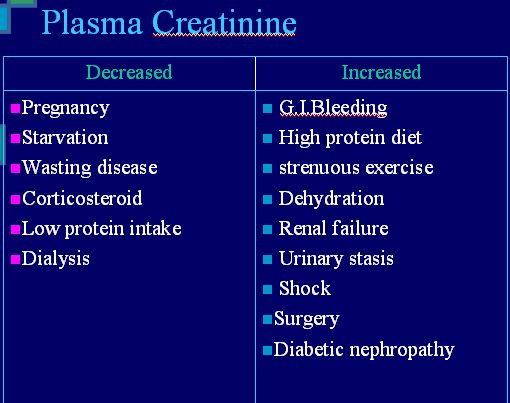
In fact, the International Society of Sports Nutrition consider creatine to be one of the most well-studied, safest, and most effective ergogenic supplements on the market.
However, it’s important to note that high-dose creatine supplementation is not recommended for people with kidney disease or any condition that can impact kidney health, such as diabetes.
For healthy people, however, taking even high doses of creatine appears to be safe.
Jillian Kubala, MS, RDAnswers represent the opinions of our medical experts. All content is strictly informational and should not be considered medical advice.
Was this helpful?
Serum creatinine (with GFR)
Creatinine is a non-enzymatic breakdown product of creatine and creatine phosphate, formed in muscle. It is excreted from the body by the kidneys.
Synonyms Russian
1-methylglycocyamidine, a product of the conversion of creatine phosphate, creatinine in the blood.
Synonyms English
Research method
Kinetic method (Jaffe method).
Units
µmol/l (micromoles per litre).
What biomaterial can be used for research?
Venous blood.
How to properly prepare for an examination?
- Do not eat for 12 hours before the test.
- 30 minutes before the study, exclude physical and emotional overstrain.
- Do not smoke for 30 minutes before the test.
Study Overview
Creatinine is a waste product produced in muscles when a substance called creatine is broken down. Creatine is part of the cycle that provides the body with energy for muscle contraction. After 7 seconds of intense physical activity, creatine phosphate is converted to creatine, then turns into creatinine, which is filtered in the kidneys and excreted in the urine.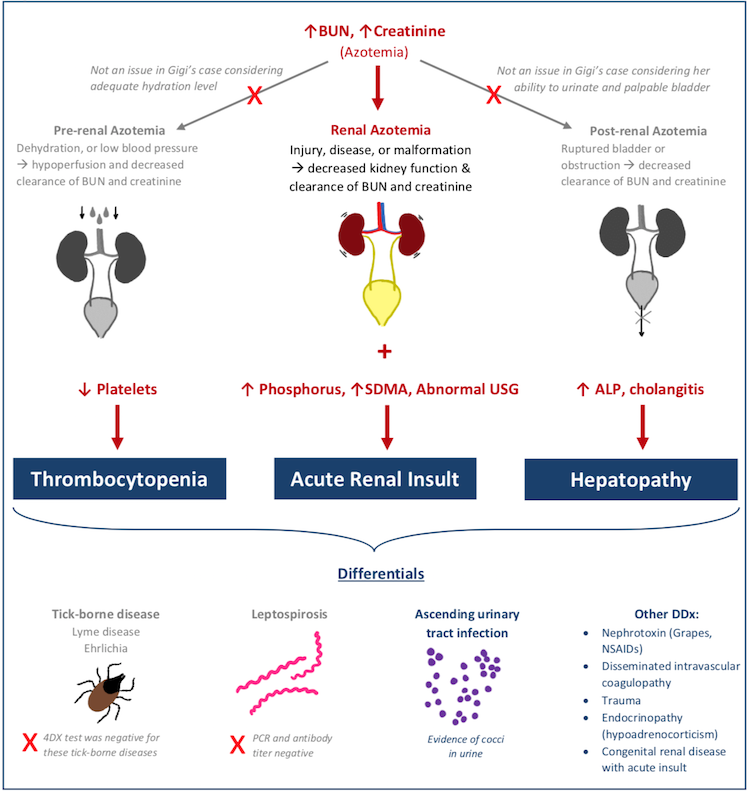 Creatine and creatinine are stably produced by our body in a constant amount. Almost all creatinine is excreted by the kidneys, so its concentration in the blood is a good indicator of their function. The amount of creatinine produced depends on the total body weight and, in particular, muscle mass. Therefore, for example, creatinine levels in men will be significantly higher than in women and children.
Creatine and creatinine are stably produced by our body in a constant amount. Almost all creatinine is excreted by the kidneys, so its concentration in the blood is a good indicator of their function. The amount of creatinine produced depends on the total body weight and, in particular, muscle mass. Therefore, for example, creatinine levels in men will be significantly higher than in women and children.
A small part (15%) is secreted by the tubules, but it is mainly produced by filtration in the glomerulus. The level of creatinine in the blood does not go beyond the norm until the glomerular filtration rate drops to critical values, especially in patients with low muscle mass. Then the creatinine level rises.
Precisely because of the large number of factors (muscle mass, sex, age) that affect the concentration of creatinine in the blood, this study is not the best screening test for detecting kidney failure. At the same time, creatinine is a more sensitive indicator of kidney disease than urea.
What is research used for?
- To assess kidney function.
- To assess the function of the main organs and systems (in combination with other studies).
- To evaluate and treat renal impairment if creatinine or urea is abnormal and the patient has an underlying chronic disease such as diabetes that affects the kidneys.
- If blood and urine creatinine levels are known, creatinine clearance (Rehberg’s test) can be calculated – this test shows how efficiently the kidneys filter small molecules, such as creatinine, from the blood.
- To calculate glomerular filtration rate to confirm kidney damage.
When is the examination scheduled?
- At regular intervals for known kidney disease or a disease that can cause deterioration of kidney function (together with the test for urea and microalbuminuria).
- In the diagnosis of skeletal muscle diseases.
- Before and after hemodialysis.

- For symptoms of kidney dysfunction:
- weakness, fatigue, decreased attention, poor appetite, sleep problems,
- swelling of the face, wrists, ankles, ascites,
- Foamy, red or coffee-colored urine,
- decreased diuresis,
- problems with the act of urination: burning, discontinuity, change in frequency (dominance of nocturnal diuresis),
- pain in the lumbar region (especially on the sides of the spine), under the ribs,
- high pressure.
- For any pathological conditions accompanied by dehydration.
- In preparation for a CT scan.
- Before prescribing drugs that can cause damage to the kidney tissue.
What do the results mean?
Reference values (creatinine norm):
Creatinine
Age, sex | Reference values | |
21 – 75 µmol/l | ||
1 – 12 months | 15 – 37 µmol/l | |
1 – 3 years | 21 – 36 µmol/l | |
3 – 5 years | 27 – 42 µmol/l | |
5 – 7 years | 28 – 52 µmol/l | |
7 – 9 years old | 35 – 53 µmol/l | |
9 – 11 years old | 34 – 65 µmol/l | |
11 – 13 years old | 46 – 70 µmol/l | |
13 – 15 years old | 50 – 77 µmol/l | |
> 15 years old | male | 62 – 106 µmol/l |
> 15 years old | female | 44 – 80 µmol/l |
GFR (glomerular filtration rate): 60 or more.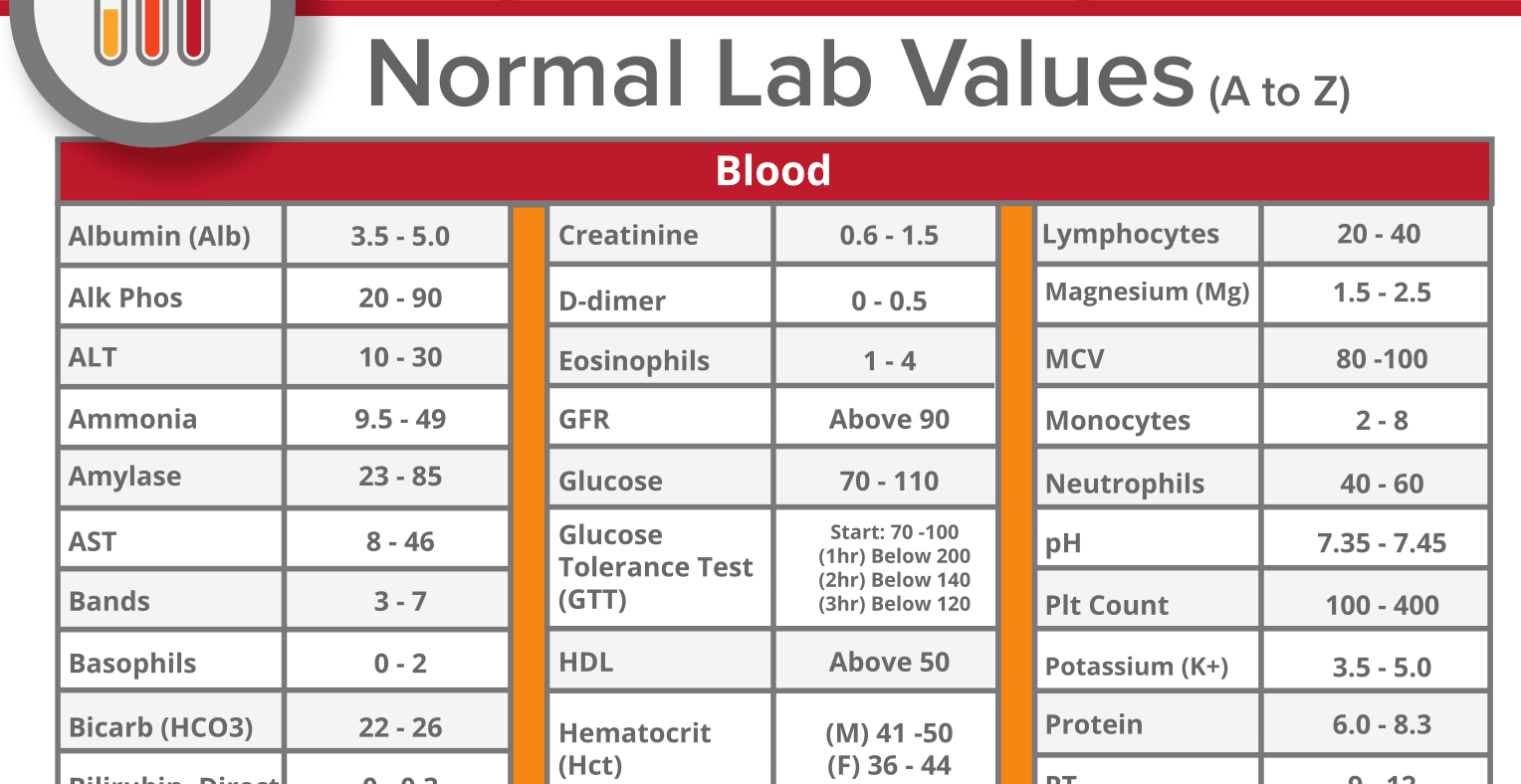
Causes of increased creatinine levels
- Acute and chronic renal failure (amyloidosis, kidney damage in diabetes mellitus, etc.).
- Failure of the cardiovascular system (myocardial infarction, cardiogenic shock, myocardial dystrophy, etc.).
- Massive destruction of muscle tissue (crash syndrome) and release of creatinine from cells.
- Burns (massive necrosis of cells with the release of their contents into the intercellular substance).
- Acromegaly.
- Gigantism.
- Hyperthyroidism.
- Dehydration (blood clotting and relative hypercreatininemia).
- Excessive exercise.
- Excess consumption of meat products.
- Radiation sickness.
- Obstruction of the urinary tract.
- Taking nephrotoxic drugs (mercury compounds, sulfonamides, thiazides, antibiotics from the group of aminoglycosides, cephalosporins and tetracyclines, barbiturates, salicylates, androgens, cimetidine, trimethoprim-sulfamethoxazole).

- Damage to the vessels of the glomerular apparatus of the kidneys (glomerulonephritis), which may be the result of an infectious or autoimmune disease.
- Bacterial infection of the kidneys (pyelonephritis).
- Necrosis of tubular epithelium (acute tubular necrosis) caused, for example, by drugs or toxins.
- Diseases of the prostate, nephrolithiasis or other factors causing obstruction of the urinary system.
- Decreased blood flow to the kidneys due to shock, dehydration, acute heart failure, atherosclerosis, or complications of diabetes.
Causes of low creatinine levels
- Fasting.
- Hyperhydration (blood dilution – relative hypocreatininemia).
- Muscle atrophy.
What can influence the result?
- Confounding factors
- Pregnancy (especially I and II trimesters).
- Performance enhancing factors
- Excessive muscle mass, such as in some athletes (may increase creatinine levels despite normal kidney function).

- Increased blood concentration of some endogenous metabolites: glucose, fructose, ketone bodies, urea.
- Use of drugs: ascorbic acid, levodopa, cefazolin, cefaclor, reserpine, nitrofurazone, ibuprofen, barbiturates, clonidine, kanamycin.
- Major muscle injury.
- Excessive muscle mass, such as in some athletes (may increase creatinine levels despite normal kidney function).
Important remarks
- Pregnant women are almost halved in creatinine due to increased blood volume (hypervolemia), increased blood flow to the kidneys, and consequently increased filtration rate; all this leads to an increase in creatinine clearance (urinary excretion).
- In the elderly, creatinine formation is normally reduced, this must be taken into account when determining the severity of their kidney disease.
- Some people who have had chronic renal failure for several years have normal creatinine levels.
Also recommended
- Urinalysis with microscopy
- Rehberg test (endogenous creatinine clearance)
- Serum uric acid
- Uric acid in daily urine
- Albumin in urine (microalbuminuria)
- Serum urea
- Urea in urine
- Creatinine in daily urine
- Potassium, sodium, chlorine in daily urine
- Serum potassium
- Serum sodium
- Chlorine in serum
- Phosphorus in daily urine
- Phosphorus in serum
- Serum calcium
- Daily urine calcium
- Calcium, ionized
Who orders the examination?
Therapist, urologist, nephrologist, infectious disease specialist, endocrinologist, gynecologist, cardiologist.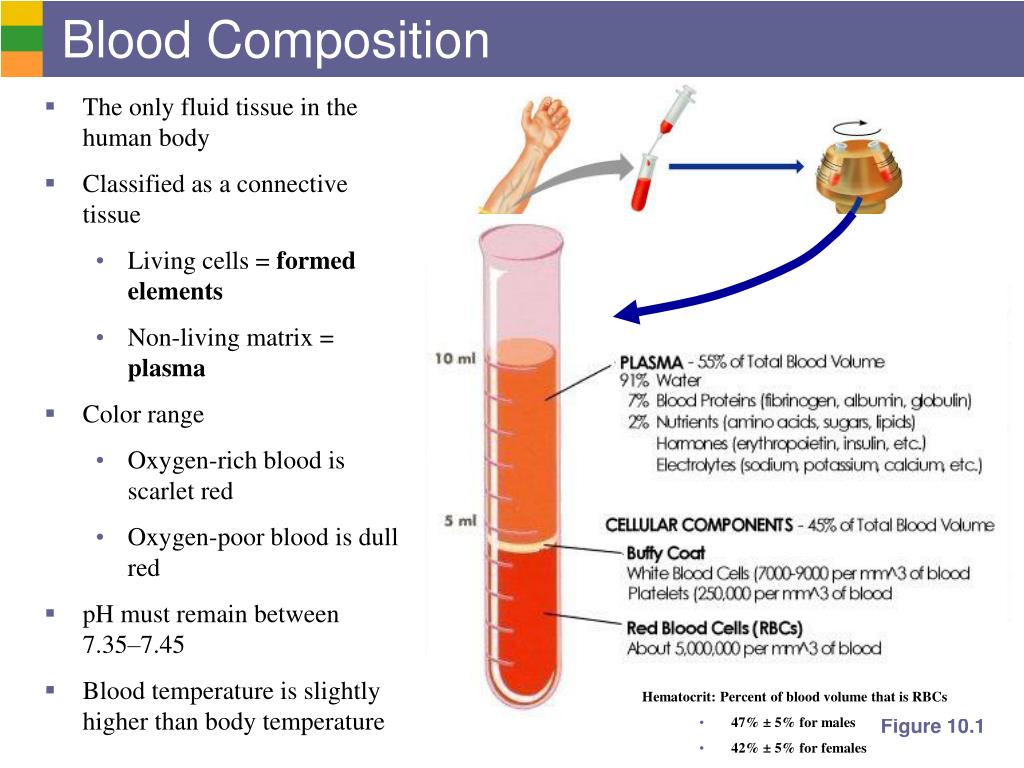
Creatinine, low levels, causes, medications and home treatments
creatinine This is an amino acid waste chemical called creatine that is produced and stored in the liver. Creatinine levels are usually indicative of normal muscle metabolism.
It usually enters the blood after a rupture. The kidneys then remove it from the bloodstream before the creatinine is completely eliminated from the body. urine.
Creatinine, low levels, causes, and medical and home treatments
This whole process is responsible for maintaining normal levels of creatinine in your body. Generally, normal creatinine levels depend on body size and muscle mass.
You need: hormonal imbalance, vitamins and minerals to improve it in the body
What is the normal creatinine value?
The normal range for creatinine is 0.6 to 1.2 mg/dL for men and 0.5 to 1.1 mg/dL for women. Any levels below or above this could be a sign of muscle deterioration.
Low blood creatinine indicates that the body produces little creatine, this condition is associated with diseases of the liver or muscles, or in connection with the passage of women through the stage of pregnancy, illness or malnutrition in the future,
Results may vary depending on age, sex and muscle mass of the patient, so there is no fixed number for normal keratinin levels in the body for people of all age groups.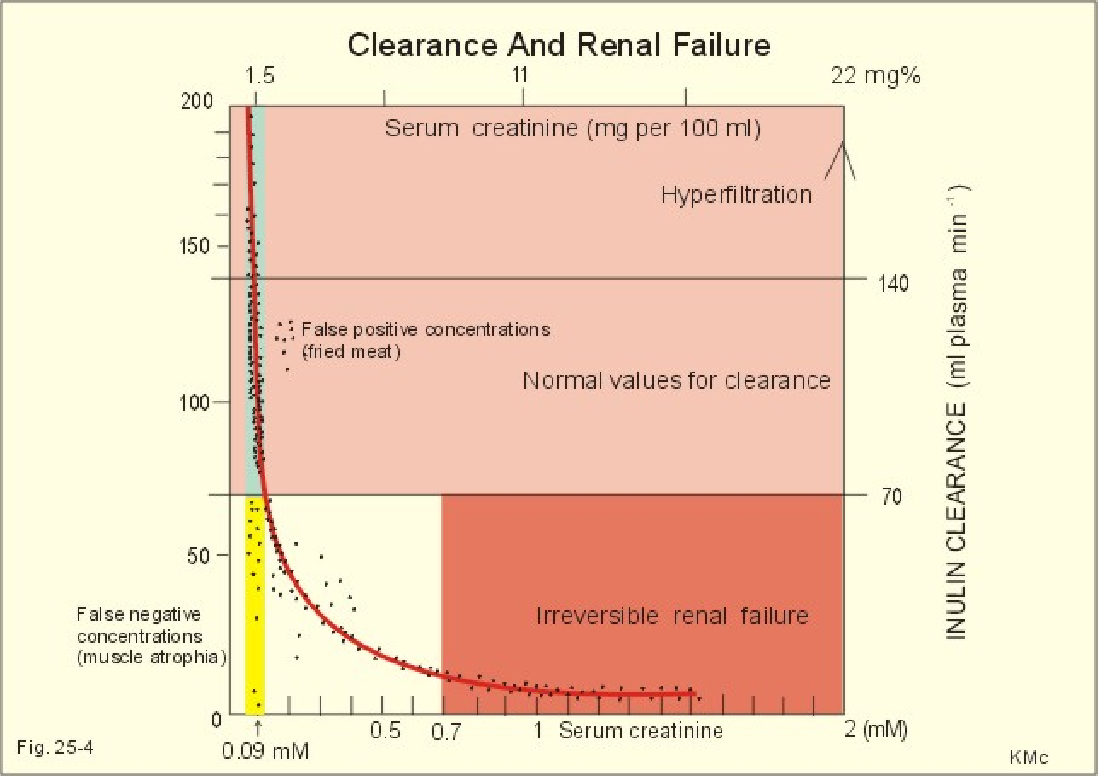
Low creatinine levels can be a sign of muscle loss, which can occur for a variety of reasons. To learn more about what can cause this loss and how you can restore normal creatinine levels, let’s now look at the signs and symptoms of low creatinine.
You need: scar, ways to get rid of it, causes, home remedies
Signs and symptoms of low creatinine are usually related to the underlying medical condition. These include:
Muscle disorders such as muscular dystrophy, which can lead to symptoms such as muscle weakness, muscle stiffness, pain and reduced mobility.
Liver disease or poor liver function can also interfere with creatine production, resulting in low creatinine levels. This can lead to symptoms such as jaundice, bloating, pain and swelling, and pale/tarry/bloody stools.
Low creatinine levels can also be caused by water loss from the body (dehydration). This may be due to increased water intake, pregnancy, or even certain medications.
As you already know, creatinine is formed during the breakdown of muscle tissue. Therefore, low levels of this waste chemical (creatinine) may be an indicator of low muscle mass—a risk factor for low creatinine levels.
You need: Rheumatoid arthritis: tests, diagnosis, signs and treatment
Blood creatinine test
A poor diet and a diet low in protein or meat are some of the common causes of low muscle mass. Your doctor may use several diagnostic tests to determine your creatinine level.
One option for determining creatinine levels is the serum creatinine test, which can help measure the level of creatinine in the bloodstream.
Creatinine, low levels, causes, and medical and home treatments
Another option is a urine creatinine test, which measures the level of creatinine in your urine. Once the diagnostic test determines your creatinine level, your doctor will suggest a treatment plan. Low creatinine levels may require additional diagnostic tests to rule out muscle disease (if present).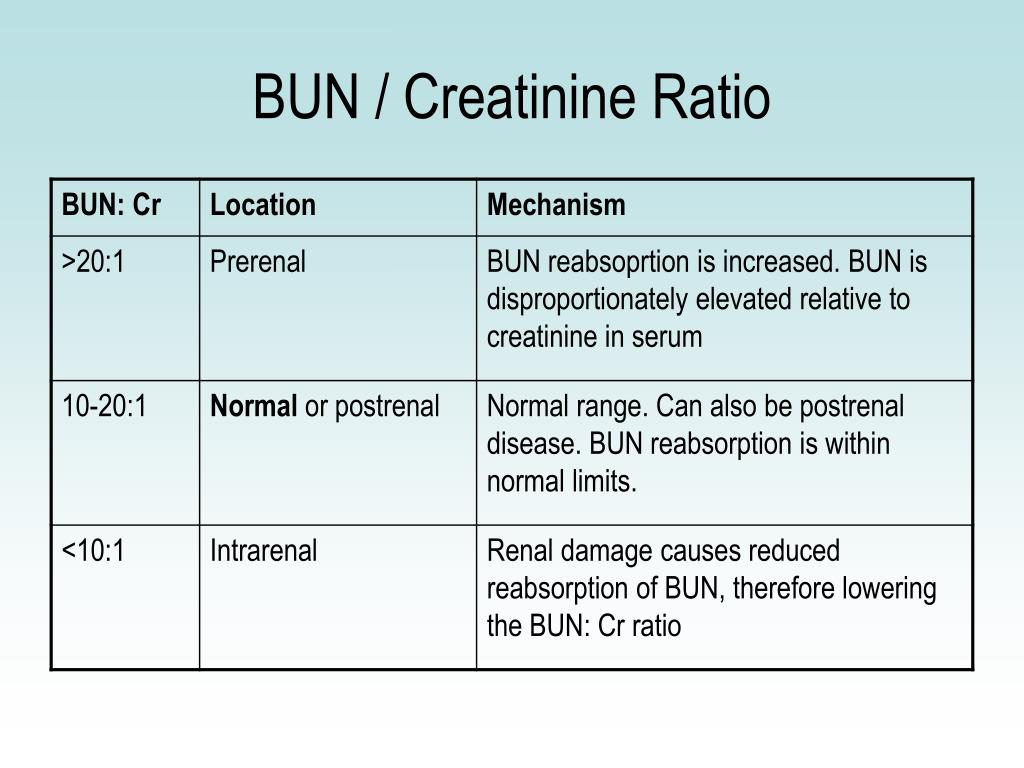
A muscle biopsy or muscle enzyme test may be done to check for muscle damage. Once the cause of your low creatinine levels has been determined, your doctor will discuss the treatment options available to treat your condition.
What you need: Flat foot surgery, preparation and recovery advice
Treating low creatinine
If you are found to have an underlying muscle disorder, your treatment will focus on controlling the disorder and relieving its symptoms. Some treatment options for muscle conditions include corticosteroids, which can help strengthen your muscles, or treatments to improve your remaining quality of life.
Low creatinine due to pregnancy usually resolves after delivery. If your low creatinine level is not related to muscle disease, medical intervention may not be needed.
You need: Breast cysts causes, symptoms, treatment and self care
Other treatment options
If low creatinine is not the result of a muscle disease, your doctor may recommend some methods that can help increase and strengthen your muscle mass to normalize creatinine levels without drugs. They may ask you to increase your level of physical activity or do strength exercises regularly to increase your muscle mass.
They may ask you to increase your level of physical activity or do strength exercises regularly to increase your muscle mass.
You can also try walking or lifting weights. If your doctor suspects that low muscle mass is caused by poor nutrition, excessive weight loss, or diet, you may be asked to change your diet to regain lost muscle.
What you need: Signs of Indigestion and Foods to Improve Gut Health
Here are some diet tips that can help increase creatinine levels by increasing muscle mass.
Low Creatinine Diet
Start with 5-6 small but healthy meals per day. Your diet should consist of protein-rich foods such as lean meats, seafood, milk, cheese, yogurt, local cheese, and soybeans.
Creatinine, low levels, causes, and medical and home treatments
Vegetarians are more deficient in protein than non-vegetarians. Hence, they must consume alternative sources of protein to replace it. Avoid alcohol as it can accelerate muscle loss.
You need: hormonal imbalance, vitamins and minerals to improve it in the body
Doing exercises
You can also do some muscle building exercises to increase muscle mass.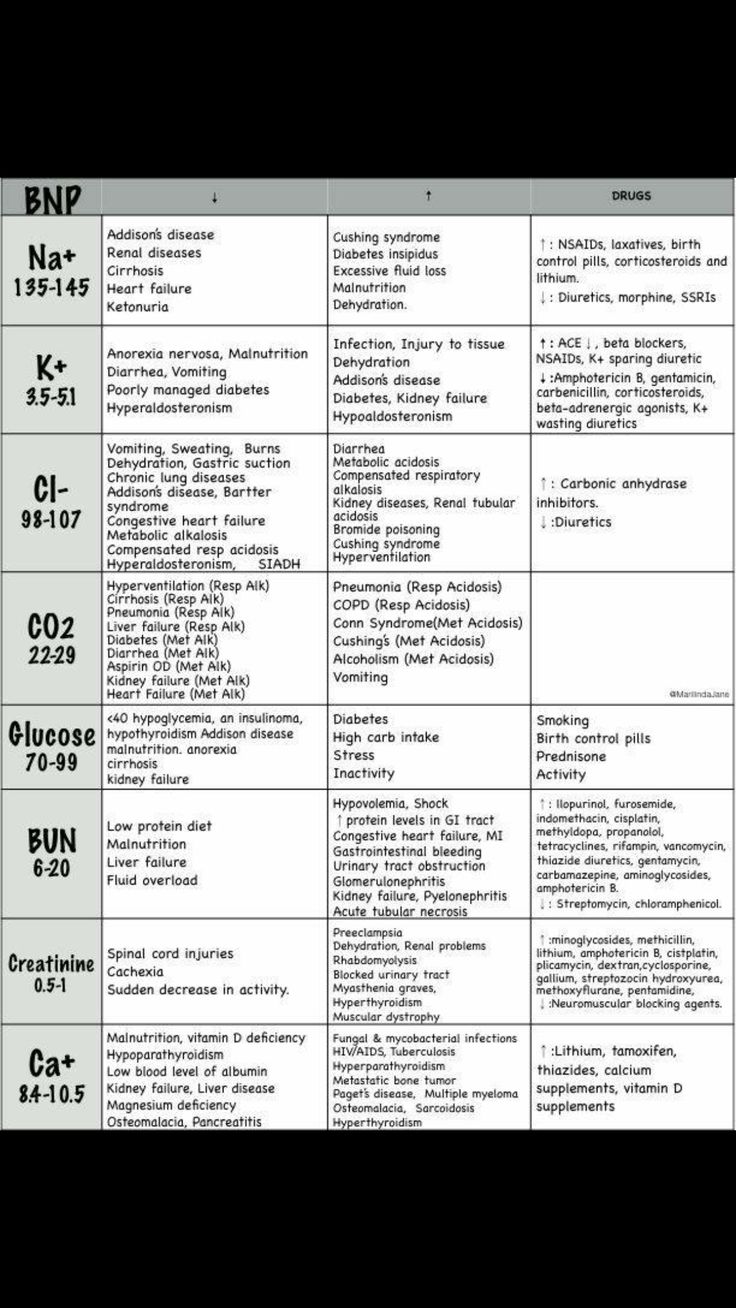 Note. You can take supplements (such as creatine monohydrate) to increase your body’s creatinine levels.
Note. You can take supplements (such as creatine monohydrate) to increase your body’s creatinine levels.
Good creatinine levels help improve athletic performance, keep muscles and bones healthy as you age, and improve brain health.
To improve low muscle mass, some exercises can help improve muscle mass. While some of these exercises, such as squats and lunges, can be done at home, you may need to go to the gym to do others.
What you need: dermatitis, causes, symptoms, diagnosis, treatment
Here are some tips to help prevent muscle loss:
- Eat a healthy diet that contains important nutrients such as vitamin D.
- Get enough sleep.
- Do not reduce your carbohydrate intake.
- Reduce your alcohol intake.
- Drink enough water to prevent dehydration.
Low creatinine levels are usually easy to recover, especially if they are not caused by a serious medical problem. The tips and exercises discussed will help you increase muscle mass in the long run.

